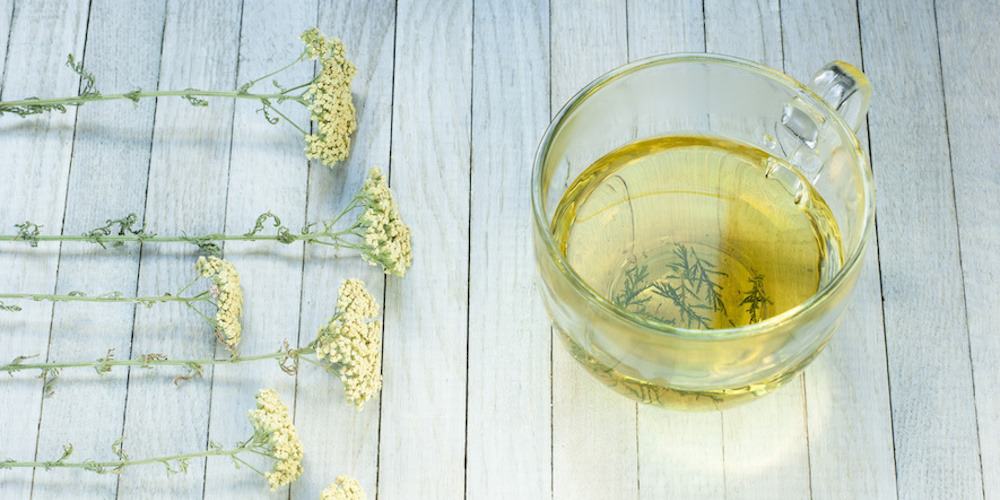BENEFITS OF YARROW
✓ Eases menstrual pain
✓ Regulates cycle and menstrual flow
✓ Relieves digestive disorders
✓ Protects the liver
✓ Improves venous disorders
What is yarrow?
Yarrow derives its common name from the Latin Achillea millefolium in reference to Achilles, the legendary hero of the Trojan War. According to the legend told in the Natural History of Pliny the Elder, he used the plant to heal his wounds and cicatrize his injuries.
Its hemostatic action (which stops bleeding) earned it many nicknames such as “cutting herb,” “bleeder’s herb” or “nosebleed.”
Yarrow belongs to the Asteraceae family, which includes a multitude of herbal plants like wormwood, chamomile, dandelion, or chicory. The Achillea genus includes 13 different species, the most well-known being Achillea millefolium.
In the wild, the plant grows in the temperate regions of Europe, Asia, but also North and South America. It is often found along paths, in meadows, and rather dry environments.
Yarrow can grow up to 80 cm high and has numerous segmented leaves (hence its Latin name “millefolium“, meaning “thousand leaves“). Between June and September, it produces small white “flowers,” called capitules, with yellow centers.
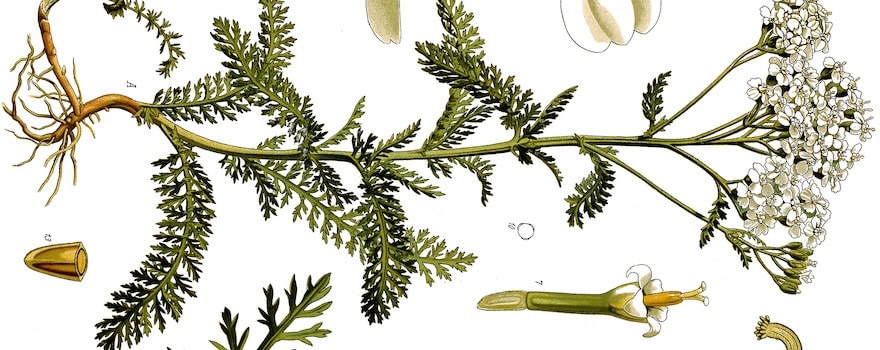
Today, yarrow is also cultivated in gardens for its beauty and medicinal properties. It is the leaves and flowering tops that contain the most active compounds and are used in phytotherapy.
Yarrow is offered as a dietary supplement in the form of capsules, powder, dried aerial parts, or mother tincture. The plant is mainly recommended to relieve female, venous, liver disorders, and digestive problems.
Nutritional composition
- Minerals and trace elements: phosphorus, potassium
- Sesquiterpenes: guaianolides, germacranolides, eudesmanolides
- Flavonoids: luteolin, apigenin, quercetin, rutin, vitexin, vicenin…
- Alkaloids: betonicine, achilleine, choline, stachydrine, homostachydrine
- Alkamides
- Tannins
- Acids: ascorbic, caffeic, folic, salicylic, succinic
- Coumarins
- Essential oils: eucalyptol, azulene, camphor, chamazulene
- Bitter compounds: sesquiterpene lactones
- Resin
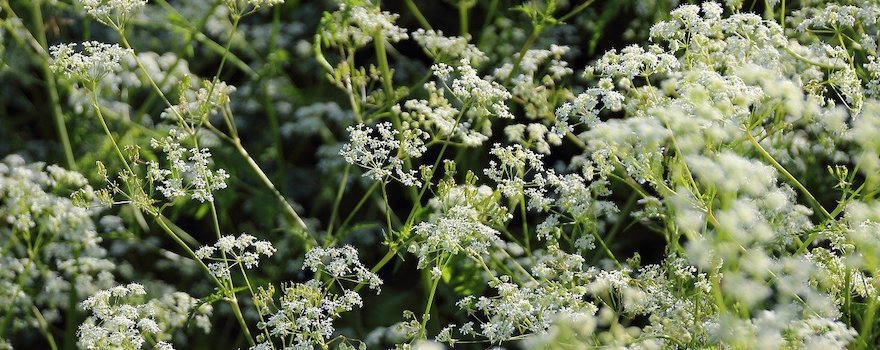
The benefits of yarrow
🌺 Relieves menstrual pain
Along with lady’s mantle and chaste tree, yarrow is one of the most interesting plants for relieving menstrual pain or dysmenorrhea. Because of its emmenagogue action (stimulates blood flow), fluid-making and antispasmodic properties, it facilitates menstrual flow and prevents uterine cramps.
This action is due to flavonoids, mainly luteolin. Besides being an antioxidant and anti-inflammatory, this compound is antispasmodic and analgesic. It particularly acts on pelvic pain felt in the lower abdomen.
It can be recommended especially for women suffering from endometriosis.
This study from the Islamic Azad University (Iran), conducted on women suffering from primary dysmenorrhea, shows how yarrow helped relieve the pain.
🌺 Regulates cycle and menstrual flow
Yarrow is also a regulatory plant for the cycle and menstrual flow. It particularly helps treat female disorders linked to hormonal imbalance such as amenorrhea (absence of menstruation). Because it stimulates blood circulation and decongests the uterus, yarrow promotes the onset of menstruation.
Generally speaking, this plant is recommended for all menstrual disorders: metrorrhagia (bleeding outside the menstrual period), very heavy periods, irregular cycle, etc. Indeed, it contains flavonoids that act as hormonal regulators.
Yarrow also has an effect on the liver, responsible for recycling estrogens. When produced in excess, these hormones are responsible for irregular menstrual cycles, painful or heavy periods, premenstrual symptoms, fibroids, and ovarian cysts. By acting against excess estrogen, yarrow rebalances the female hormonal cycle and prevents menstrual disorders.
This review from Palmer College of Chiropractic in Davenport (United States) highlights the potential of yarrow in treating menorrhagia and menstrual disorders.
♻️ Relieves digestive disorders
Yarrow is a valuable plant for the digestive system. Numerous studies have highlighted its effectiveness in relieving difficult digestion, stomach aches, digestive spasms, bloating, and gastrointestinal ailments in general.
The plant contains bitter compounds that, in addition to stimulating appetite, increase bile production, responsible for food digestion. Therefore, yarrow is a choleretic plant. Additionally, its antispasmodic action, due to flavonoids and azulene, relieves spasms in the colon and stomach, promoting better intestinal comfort.
This study from the University of Calgary (Canada), conducted on rats, shows that yarrow effectively protects the gastric mucosa.
This other study from the Federal University of Paraná (Brazil), also conducted on rats, explored the anti-ulcer potential of the aerial parts of yarrow.
Finally, this other study from the University of Vienna (Austria) shows how yarrow stimulated bile production in rats.
💎 Protects the liver
Yarrow is a great protector of the liver. It is particularly indicated for relieving hepatic congestion that occurs after heavy meals or alcohol abuse. Due to its anti-inflammatory action, yarrow is also beneficial in cases of hepatitis (acute or chronic inflammation of the liver) or liver failure.
Finally, yarrow exerts a hepatoprotective effect and shows powerful anti-hepatotoxic activity. It thus protects the liver from various toxic agents, notably damage induced by D-galactosamine.
This study from Ziauddin Medical University (Pakistan), conducted on mice, demonstrates the hepatoprotective activities of yarrow.
🔺 Improves venous disorders
Due to its anti-inflammatory and fluidifying action, yarrow is recommended for relieving varicose veins, phlebitis (vein inflammation), and venous insufficiency. Indeed, it improves venous return and blood circulation through capillaries and small veins.
As a result, yarrow also relieves hemorrhoids, associated with inflammation and excessive dilation of the hemorrhoidal veins.
Further studies are needed to evaluate the effectiveness of yarrow in improving venous disorders.

How to consume yarrow?
Yarrow in tablets
Yarrow tablets or capsules are easy to find in organic and specialty stores or online. They contain the aerial parts of the plant (leaves and/or flower tops) reduced to powder.
Choose preferably 100% natural and/or organic-certified capsules, without GMOs, excipients, preservatives, and non-ionized.
Yarrow in powder form
Yarrow powder is obtained after harvesting, drying, and grinding the aerial parts of the plant. It easily mixes with water, milk, or fruit juice and can even be sprinkled on salads or incorporated into desserts.
However, be aware that yarrow powder has a very aromatic and bitter taste.
Yarrow as a mother tincture
The mother tincture of yarrow is obtained by hydroalcoholic extraction of the entire plant or only the flowering tops. Rich in active ingredients, it easily dilutes in water or fruit juice.
Due to its high alcohol content (about 60%), this form is not recommended for pregnant women, children, or people suffering from certain conditions. Preferably choose a certified organic mother tincture with guaranteed plant traceability.
Dried flowering tops and leaves of yarrow
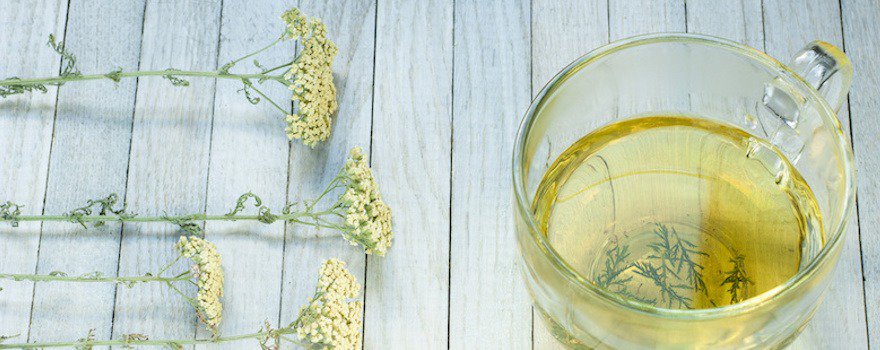
It is possible to find yarrow leaves and flowering tops sold in bulk or in sachets. This form is mainly used to make infusions using 1 to 2 teaspoons of dried leaves and/or tops in 150 ml of water. Let it infuse for 5 to 10 minutes then add a teaspoon of honey or sugar to reduce the bitterness of the yarrow.
Favor plants grown according to organic farming principles to avoid pesticide residues and other chemicals.
Yarrow and medicinal plants
Yarrow pairs very well with other women’s key plants such as lady’s mantle (Alchemilla vulgaris), chaste tree (Vitex agnus castus), evening primrose (Oenothera biennis) or maca (Lepidium meyenii).
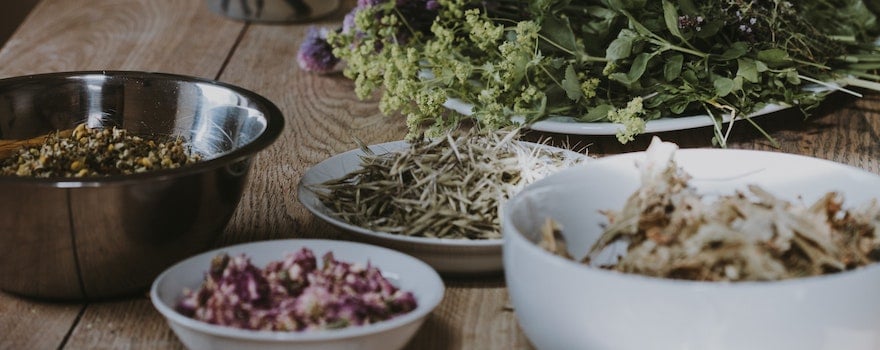
Dosage of yarrow
⚖️ It is generally recommended not to consume more than 3 g of yarrow per day.
⏳ Doses should be taken between meals and several times throughout the day.
⏳Yarrow is mainly taken for maintenance, for just a few days. Indeed, it is a photosensitizing plant that can cause skin reactions in some people. Therefore, it is advised not to exceed 15 days of treatment.
💊 In tablets: up to 5 per day for 240 mg capsules.
🥄 In powder: up to 3 g per day.
🧪 In mother tincture: 30 drops, 2 times a day.
🍵 In infusion: 3 cups per day.
Contraindications and side effects
Yarrow has certain contraindications and its consumption is discouraged for the following people:
- As a precaution, young children, pregnant or breastfeeding women should avoid taking yarrow.
- It may interact with the action of blood thinners (anticoagulants), hypotensive medications and antiplatelet drugs.
- Consumption of yarrow is discouraged for allergic individuals to plants in the Asteraceae family (dandelion, chamomile…).
- Due to its action on hormones, yarrow is not recommended for women with a history of breast cancer.
Its intake causes few side effects and is generally well tolerated by the body. In case of allergy or too high or prolonged doses, skin reactions may occur.
If you experience side effects, stop your consumption and consult a doctor.
History, culture, and market of yarrow
A very ancient medicinal plant
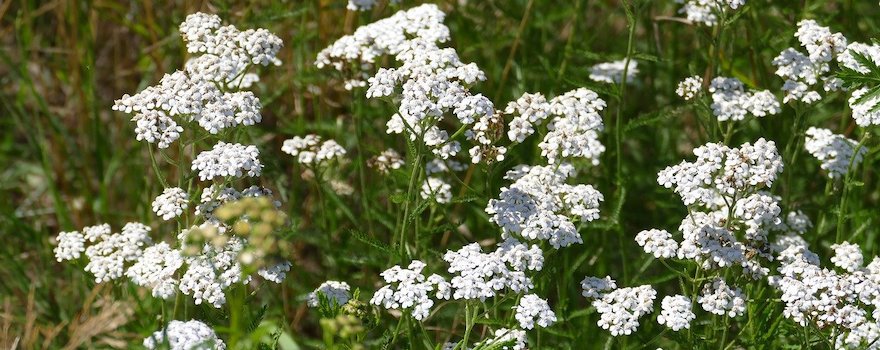
Yarrow is certainly one of the oldest medicinal plants. According to a review from Tehran University of Medical Sciences, the plant has been used since ancient times.
Due to its widespread occurrence globally, yarrow serves as a traditional remedy for many local populations. Thus, there are ancient traces of its use in Turkey, New Mexico, and also in Asia Minor.
According to legend, it was also used to heal the wounds of warriors and soldiers. During World War I, it was part of the first aid kit carried by some soldiers. It was then used to stop bleeding and accelerate healing, earning it the nickname “soldiers’ herb.”
Report by Julia Perez and Charlotte Jean
Scientific sources and studies
Ensiyeh Jenabi, Bita Fereidoony, 2015. Effect of Achillea Millefolium on Relief of Primary Dysmenorrhea: A Double-Blind Randomized Clinical Trial.
Anna B. Livdans-Forret, Phyllis J. Harvey, and Susan M. Larkin-Thier, 2007. Menorrhagia: A synopsis of management focusing on herbal and nutritional supplements, and chiropractic.
Cristiane Hatsuko Baggio, Paulo Fernando Nhaducue, Cristina Setim Freitas, Lia Rieck, 2002. Action of crude aqueous extract of leaves of Achillea millefolium L. (Compositae) on gastrointestinal tract.
Cavalcanti AM, Baggio CH, Freitas CS, Rieck L, de Sousa RS, Da Silva-Santos JE, Mesia-Vela S, Marques MC, 2006. Safety and antiulcer efficacy studies of Achillea millefolium L. after chronic treatment in Wistar rats.
Benedek B1, Geisz N, Jäger W, Thalhammer T, Kopp B, 2006. Choleretic effects of yarrow (Achillea millefolium s.l.) in the isolated perfused rat liver.
Yaeesh S, Jamal Q, Khan AU, Gilani AH, 2006. Studies on hepatoprotective, antispasmodic and calcium antagonist activities of the aqueous-methanol extract of Achillea millefolium.
S. Saeidnia, AR. Gohari, N. Mokhber-Dezfuli, and F. Kiuchi, 2011. A review on phytochemistry and medicinal properties of the genus Achillea.


